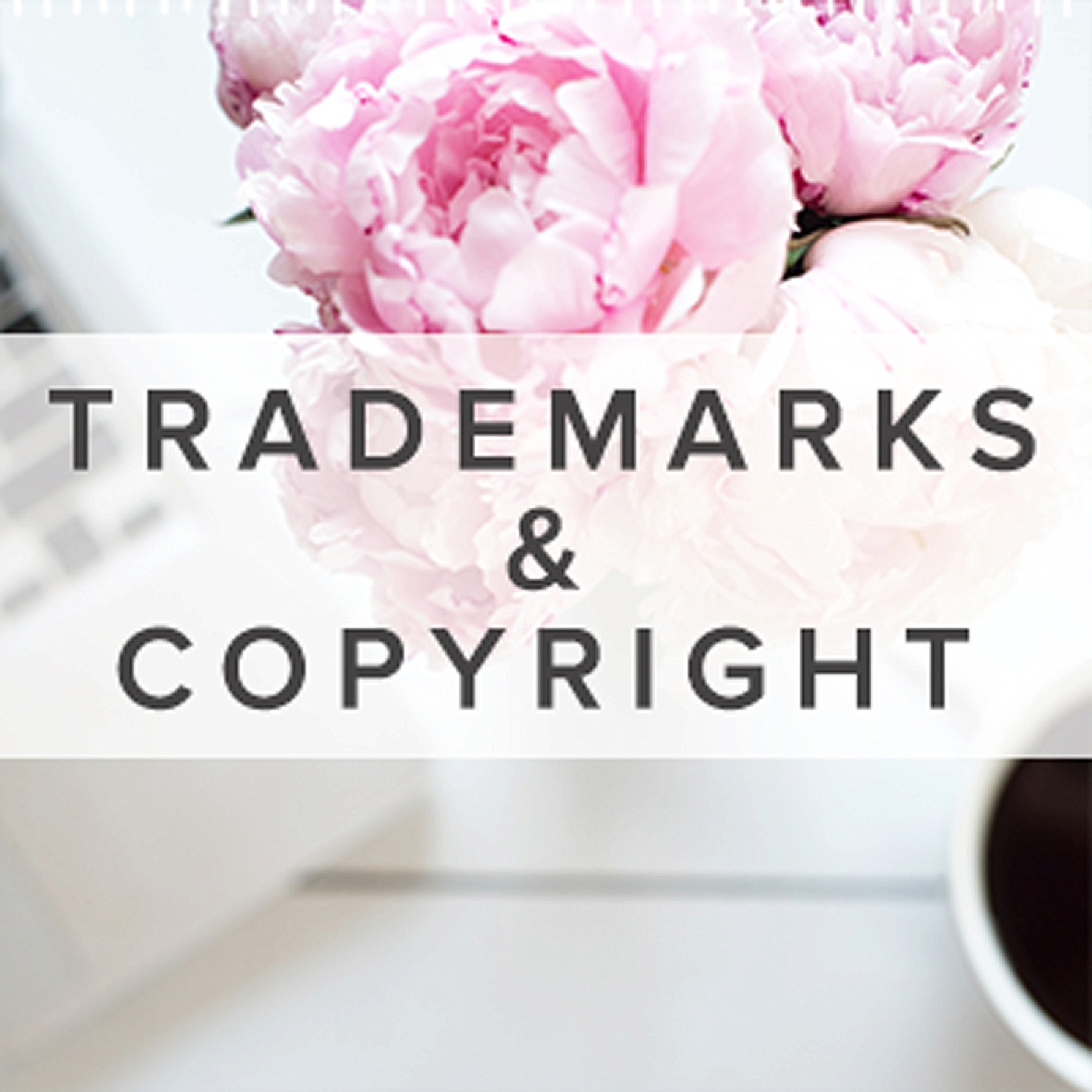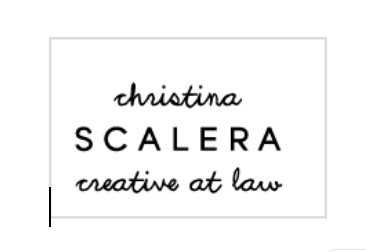
Back in the day, I used to while away my days in a cubicle protecting brands like DORITOS and LAYS from international trademark infringers. Cubicle? Bleh. Branding? HECK YES! It was SO FUN to be so invested in a brand. I learned to love trademarks for what they represent. That little logo or word means so much more than “a cheese flavored chip,” it means years and years of sweat equity poured into a product that someone believes in. And when it’s your brand that you believe in, not some mass-produced chip… How amazing is that feeling? I’ll never forget the time I filed my first trademark on behalf of my own company. It was thrilling and in a way, it felt like I had arrived. Even more than when I pressed ‘publish’ on my website, and even more than reaching 1000 friends on Instagram.
Your trademark is the official representation of your company, and everything your company stands for. So why, as creatives, do we treat our name or logo as an afterthought…something to deal with later when we’re bigger/more visible/make more money/so on and so forth? I don’t know, but I theorize it’s because ignorance is bliss. Ignoring the fact that others could blatantly steal our name, logo, tagline or other identifying piece of our business is a lot easier for most of us than figuring out what a trademark is or how to get one registered. Today, let’s bust through some of that ignorance and find out what the heck a trademark is and why you should care about that little piece of paper from the government that says yours is registered.

What is a trademark?
A trademark is a source-identifier of a product or service. Contrary to popular belief, trademarks exist to prevent buyer confusion, not to protect the owner of the trademark.
For example, I likely cannot market a soda called ‘Koka-Kola,’ because this is probably too close to the well-known trademark ‘Coca-Cola.’ If I marketed and sold my product, it is likely someone could pick up a can of Koka-Kola and think it’s a new product from the better-known Coke Company. Let’s say my Koke product tastes awful, and consumers think Coca-Cola is producing an awful-tasting soda these days. This would not be good for the Coke Company, who has spent lots of money and nearly 100 years promoting their superior product under their trademark ‘Coca-Cola.’ Therefore, by using my trademark Koka-Kola, I could be confusing consumers and thus hurting the reputation of the Coca-Cola company. Trademark law protects consumers against this kind of confusion.
What is a copyright?
A copyright is the right to own and use a work as soon as that work is fixed in a ‘tangible medium.’ This means if you take a photograph, you immediately own that photograph and all rights to it (barring a prior agreement, such as a work-for-hire agreement, that states otherwise.)
For example– photographs, fonts, mug designs, blog posts, newsletters, emails to friends, notes in your agenda and most Facebook posts all likely fall within the domain of copyright law, not trademark.
Today is about trademarks, but copyrights are important too! That’s why we’ll be talking more about them in our upcoming webinar on January 21st.
How is a trademark different from a copyright?
Trademarks concern anything that identifies a source of a product or service. Logos, taglines, domain names, and phrases are all likely to be registered as trademarks of a business.
Copyrights are certain exclusive legal rights to use a work. Copyrights exist to promote the generation of useful and creative art and do not consider how consumers may view a work of art or other creation. Copyrights generally concern longer written works, such as blog posts, photographs, videos, or any other work that can be fixed in a tangible medium, such as on paper, typed or written to an SD card.
Do I need to trademark my name? My logo?
That depends. It’s not a bad idea to register if you want to make sure someone else anywhere in the US doesn’t come along and start using your name for his or her business or product.
Nonetheless, trademarks are fixed upon use. That means as soon as you start using your business’ name or logo you immediately have certain rights to your business’ name and/or logo. However, without registration, these rights are limited by your immediate geographic area and potentially your limited market niche.
When you register your trademark(s) (your business name, logo, taglines, etc.), you gain broader benefits to use your trademark and more protections.
You can register your trademark with the federal government, called a federal registration. This is generally preferred over the other option- to register your trademark with the State or States in which your business operates. For a little more money for the federal application for registration, your trademark is registered across the United States rather than just one or two states. This puts other new business owners ‘on notice,’ so they can’t just start unilaterally using your registered trademark as their own without opening up the possibility for getting sued by you. Typically, you would try to get a state registration instead of a federal registration when the federal registration is unavailable (such as when someone else has already registered the same or similar mark).
Each trademark must be registered separately. So for example, registration of your business name would be under one application for registration, and registration of your logo would be under another application for registration, and finally, your tagline would be under yet another application for registration.
It’s important to note that protection extends ONLY to what is registered. For example, if you register your logo, your business name may not be protected because the stylized artwork of the logo is what was registered, not the name. Let’s look at an example.
Example of a Word Mark: CREATIVE AT LAW
Versus
Example of a Stylized Logo:

In the latter example of my logo with tagline, only this particular style is protected. So, for example, if I only registered the second version with my logo, I would have a limited ability to go after someone who uses my tagline “creative at law.” However, if I registered the former word mark only, I would have much broader rights to use my tagline and protect it from infringement. For this reason, most small business owners who can only afford one registration choose to more broadly protect their business name or tagline with a word mark rather than a stylized mark such as a logo.
How much does it cost to register a trademark?
The government filing fee to register one trademark electronically is $325. Each additional class costs $225 for an electronic filing. See #7, below, where we discuss trademark classes.
To hire a reputable attorney to file for you will likely cost at least $1500. The benefit of hiring an attorney is that your mark is filed properly the first time in the correct class(es), and you will receive timely notifications concerning big dates, such as the renewal date, so that you don’t lose the mark. Attorneys also handle any oppositions to a trademark application that may arise if the name, phrase, word or logo you are trying to register is too similar to someone else’s trademark and they oppose your mark. When you hire an attorney, you are less likely to face an opposition because attorneys do a thorough search of the trademark you seek to register, comparing it to prior registered marks, websites, logos and anything else that could undermine your effort to register your trademark.
How do I register my trademark?
Trademark registration is tricky process, which is why most attorneys do not recommend you try to do it yourself. This is because you have to choose the right class or classes of goods to register your mark within, and you must do a proper search beforehand to see what the likelihood of your application approval is. Many DIY registrants don’t understand the complexity of choosing a class for their registration, and unwittingly register for the wrong class, which essentially means the law treats it as if they don’t even have a registration, despite the time and hundreds of dollars spent on obtaining one.
Federal trademark registrations are processed through the US Patent & Trademark Office (USPTO).
What is a trademark class?
One of the biggest misconceptions about trademark registration is that once a word, phrase or logo is registered, you own a universal trademark to put on whatever product or service you want.
Trademarks are registered by class, which means the mark is only valid for the particular class or classes it is registered under (and there are 45 to choose from!)… For example, if you produce hand-lettered t-shirts, you may want to register your business name under Class 25, which extends trademark rights to clothing companies or products. However, if you then start selling your own fabrics to make the t-shirts, your trademark rights would not necessarily extend to this new business venture, because fabrics and textile marks are eligible for protection in Class 24.
What do I do if someone is using my trademark?
You have some options. First, take a deep breath. And give yourself a pat on the back. Imitation is the sincerest form of flattery? Yeah? Well, anyway, flattered or not, stealing your stuff isn’t cool. Since intellectual property issues are highly factual, it’s a good idea to ask an attorney about what to do.
The attorney will most likely draft and send a cease and desist letter to the alleged infringer, asking the alleged infringer to take down the infringing material or change their name to something different than yours.
If that doesn’t work, or if you think this alleged infringer has financially harmed your business, you can retain an attorney (if you have not already done so) to sue this person or business. If this person is found to be infringing your trademark, your attorney can seek an injunction (a court order to stop using your trademark) or damages (a court order for the infringer to pay you) or both on your behalf. Additionally, you may be awarded attorney’s fees as an additional benefit of registering your trademark. Note: in order to sue in federal court, you must have a federal registration of the trademark.
Hopefully you’ve learned quite a bit about trademarks today. It’s hard to condense years of experience into one blog post, which is why I’m coming out with the Legalize Your Biz course this Spring which will cover everything from trademarks to licensing to contracts. Use the promo code RisingTide for 20% off your registration while it lasts.
The content in this article is provided for informational purposes only. This information does not constitute legal advice and does not establish an attorney-client relationship. Should you need legal advice for a particular matter concerning your business, seek out the guidance of a licensed attorney.



